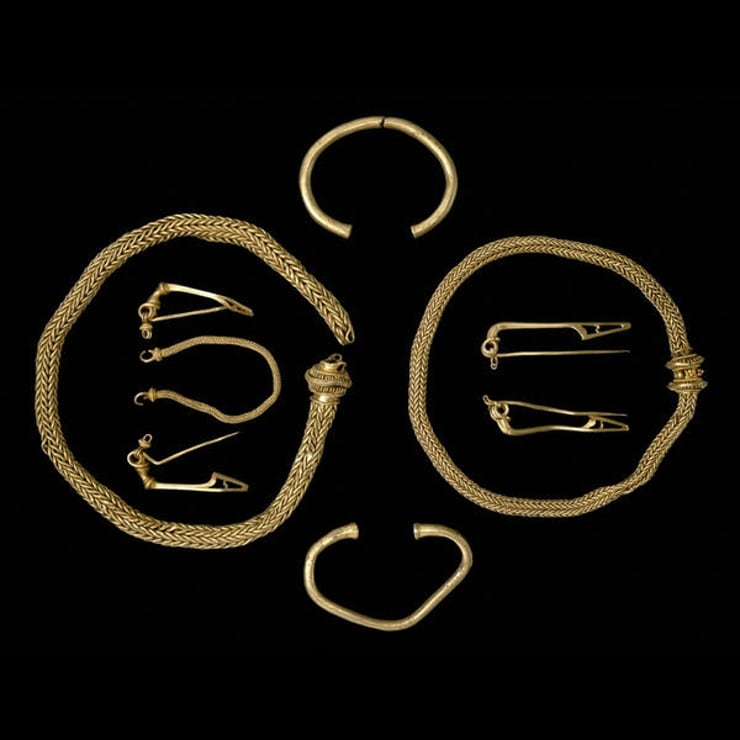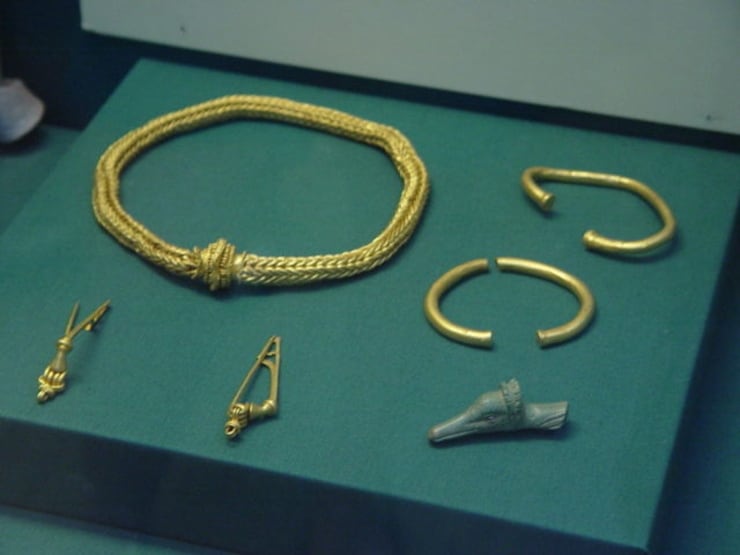19.12.2000 Winchester golden treasure
Categories: Treasures , Calendar , Nálezy nejenom s detektorem ve Velké Británii a Irsku

The British Museum has boasted a magnificent collection of gold jewellery for twenty years. The beautiful hoard was discovered by a prospector using a metal detector in Winchester. The hoard includes necklaces, brooches and pins. The value of the find has been estimated at £350,000.
The treasure was found near Winchester by retired florist and amateur metal detectorist Kevan Halls. This was during a number of prospecting trips he made in September, October, November and December 2000. First he came across a brooch, then more gold jewellery. He contacted experts at the British Museum. They themselves went to the site of the discovery to try to get information about how the jewellery got there.
However, the archaeologists found no evidence of settlement at the site in earlier times. They found no remains of buildings like temples and the like. Later, experts said that the brooch and other items found were probably buried on top of a hill covered by trees.
Upon further investigation, the discovery was declared a treasure and its value was estimated at £350,000. Under the relevant 1996 Act, the money was divided between the finder and the owner of the land where the finder had discovered the depot. The Winchester hoard was one of the first times a large reward was shared in this way. Until then, officials had little experience of this.
The treasure consists of two sets of gold jewels. It contains necklaces, several brooches, clasps and bracelets. The depot is unique in that the jewelry was made of a material that contained a very high percentage of gold. Based on X-ray fluorescence tests, experts at the British Museum found that it was 91 to 99 percent.
The treasure dates from between 75 and 25 BC. The two brooches are typical in their workmanship of the Latin style, which was found on ornaments, weapons, and common pottery in their time.As for the ornamentation itself, the spiral and volute are typical. Brooches in a similar style have been found, for example, north of the Alps. In total, dozens of pieces have been discovered.
Differences can be found in the two neckpieces discovered, each of which is of a different size. One appears to have been designed for a man, the other for a woman. Such jewellery was usually owned by wealthy people of a higher class.
This is one of the most important late British Iron Age treasures found in the UK in the last fifty years. The jewellery is housed in the British Museum, where it is overseen by experts.

Sources: www.bbc.co.uk, www.cambridge.org
The article is included in categories: